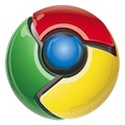I'm looking at the plans for my next project, and the guy I'll be working with side-by-side is pretty much set on C++ for his project, and since it feeds into mine, I really would need a spectacular reason not to pick the same thing. So I started looking at the current version of the project I'll be updating and seeing what it had that I might find difficult to get my hands on in C++. The key components I could come up with were:
- Good Database Tools - with SQLAPI++, there's no problem there. We can connect to MS SQL Server which is the "standard" at the shop.
- In-Memory Database - it might be very nice to have something like H2 in C++ so that should I choose to go down that path, it would be as easy to use as an external database, but much faster.
- Web Server - the current project does a lot of serving of requests via 29 West and http requests (it's a Tomcat web app). If I"m going to make the transition as simple and easy as possible, then I need to be able to handle http requests.
When I started looking at the in-memory database, I realized that SQLite can be used to create in-memory databases, and since it's also supported by SQLAPI++, it's a perfect solution for what I might need. You only need to open a connection the the special file named :memory: and the connection returned will be to a blank, in-memory database. Close the connection, however, and the database goes away.
Additionally, if you open another connection to the same special file, you'll get a completely different in-memory database. This is really interesting in that it allows the user to create as many unique in-memory databases as they wish. Unfortunately, it's not as nice as H2 in that the connection can be set to stay open, but it's a reasonable compromise for an in-memory database.
Even if I didn't use the in-memory database, the SQLite filesystem database is strong enough to not corrupt the file through power outage, and it's very fast for a single system to hold data - so should I want to use it to hold configuration details or parameters, it's certainly more than up to the task.
So I think I have more than enough on the database front for this project in C++. But the real question was the web server interface. I needed to have an embeddable web server that was going to be reasonably fast, small, easy to interface to, and handle all the things I needed. I had to hit Google for this one.
After a lot of poking around, I found several that might fit the bill. The most interesting is Lighttpd - pronounced "Lighty" by the author, and it's goal was to be able to handle 10,000 connections on a single server. Admirable goal, and it's being used by some heavy hitters out there. The big problem seems to be that it's a complete web server with CGI capability. That means that I'd need to create something to use as CGI and then put that into the web server. Not a lot different from using Apache, except the loading capable with the server. So I kept looking.
I found a GNU project: libmicrohttpd which is a C library that you can embed and gives you tons of the goodies you'd need - and far more than I'd need in this application. It's in C, which means it's going to need to be wrapped at least a bit, but it's a strong possibility in my mind because it's a GNU project, and they tend to be pretty bug free.
Probably the most promising candidate seems to be mongoose hosted on Google Code. It appears to be a nice C/C++ library that runs on a ton of platforms and handles all the things I need a web server to do. Additionally, it boasts a simple, clean API to plug into for request processing.
After looking at mongoose, I think I have enough to get started - technically, on this project. It's not necessarily ideal, but I have to say that if I ported my Google DataTable code from Java to C++ and put it in CKit, I think there's not a lot I couldn't do in the existing project. The real problem is that there's a ton I want to do in the new project that's a lot more complex than what's being done in the current project that I'm still going to need to think about it.
I just don't want to get to the point that I have to re-write huge chunks of functionality from one language to C++ in order to get things working. It's a waste of time and a maintenance nightmare.



